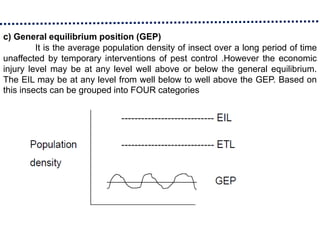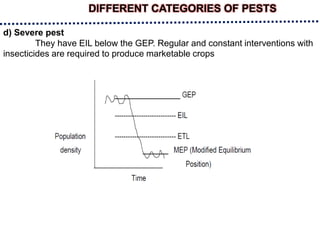1) The document discusses the concepts, principles, evolution and components of Integrated Pest Management (IPM). It describes how IPM aims to control pests in a way that minimizes environmental and health risks through the integration of multiple control tactics.
2) Key concepts of IPM include understanding the agricultural ecosystem, planning crop systems to reduce pest problems, considering cost-benefit ratios of control methods, and tolerating a certain level of pest damage. Common IPM components are monitoring, cultural, mechanical, physical, biological and chemical control methods.
3) The evolution of IPM involved a shift away from reliance on pesticides alone after issues like pest resistance emerged, towards a more integrated approach balancing multiple control tactics


























